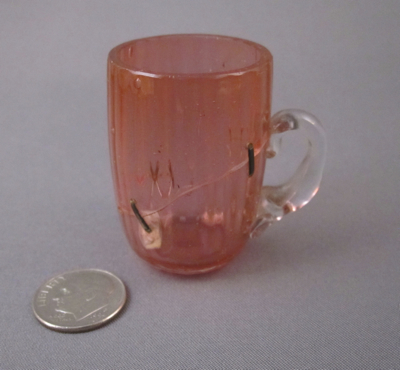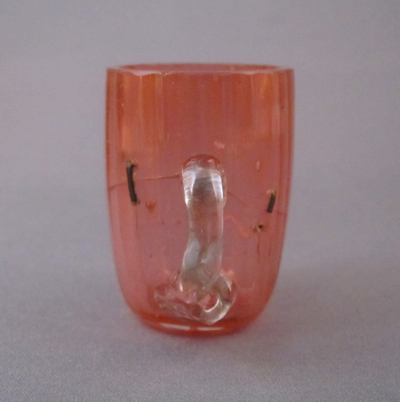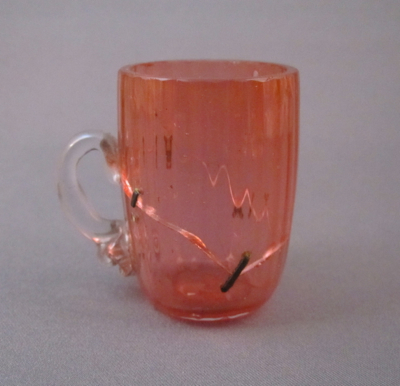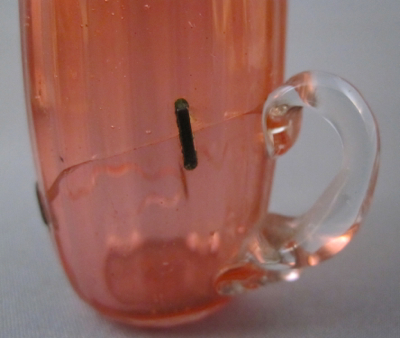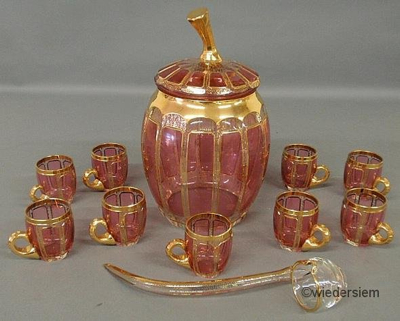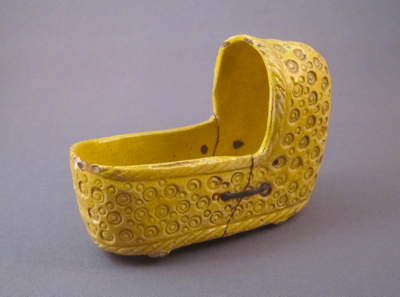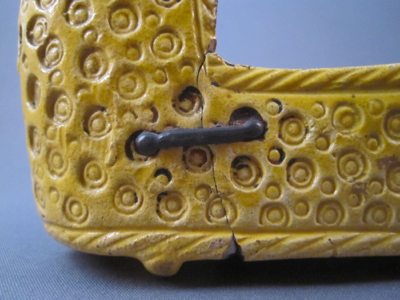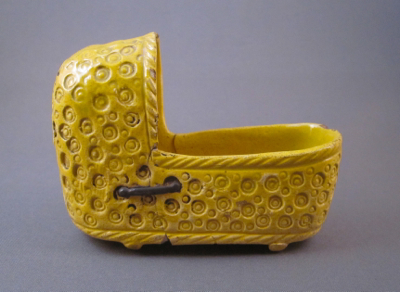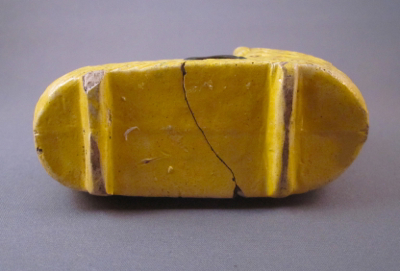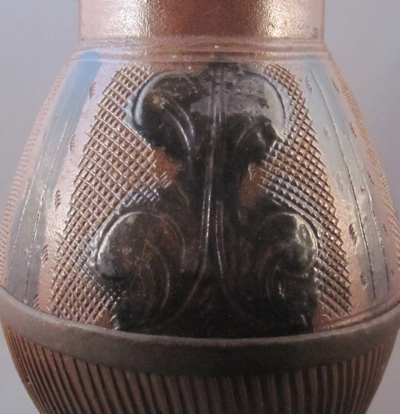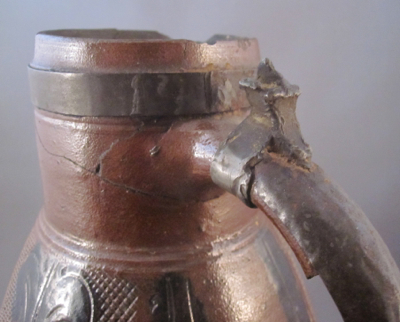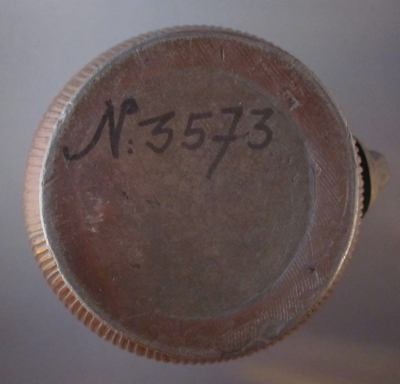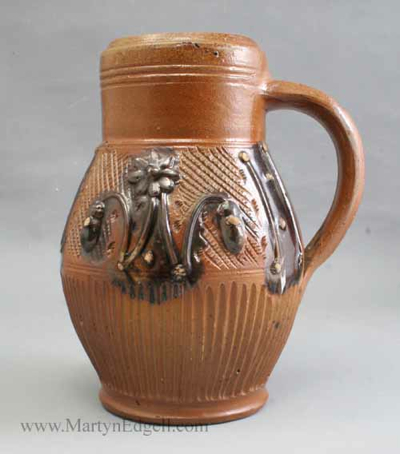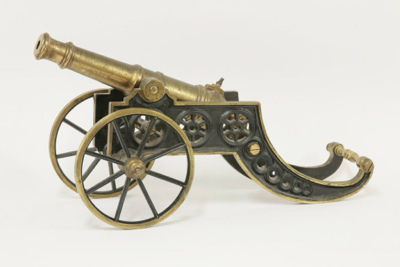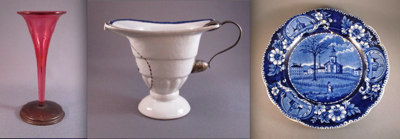This diminutive hand-blown ribbed cranberry glass punch cup has an applied clear glass handle and polished bottom. I purchased it about a year ago from a dealer in the UK who thought it was made in Bohemia around the turn of the 19th century. Standing just a mere 1-1/2″ tall, it is one of the smallest examples in my collection. It would have been a part of a larger set, including a punch bowl, ladle and up to 12 matching cups. After this cup broke, a tinker very carefully bore eight minute holes through the sides of the glass, using a drill bit covered in diamond dust, and attached four 1/4″ long metal staples. These are some of the smallest staples I have ever seen. It must have taken nimble hands and years of experience to repair this tiny gem.
This elaborate cranberry glass punch set with gilt decoration, made by Moser, would originally have had a dozen matching cups and an undertray.
Photo courtesy of Live Auctioneers
